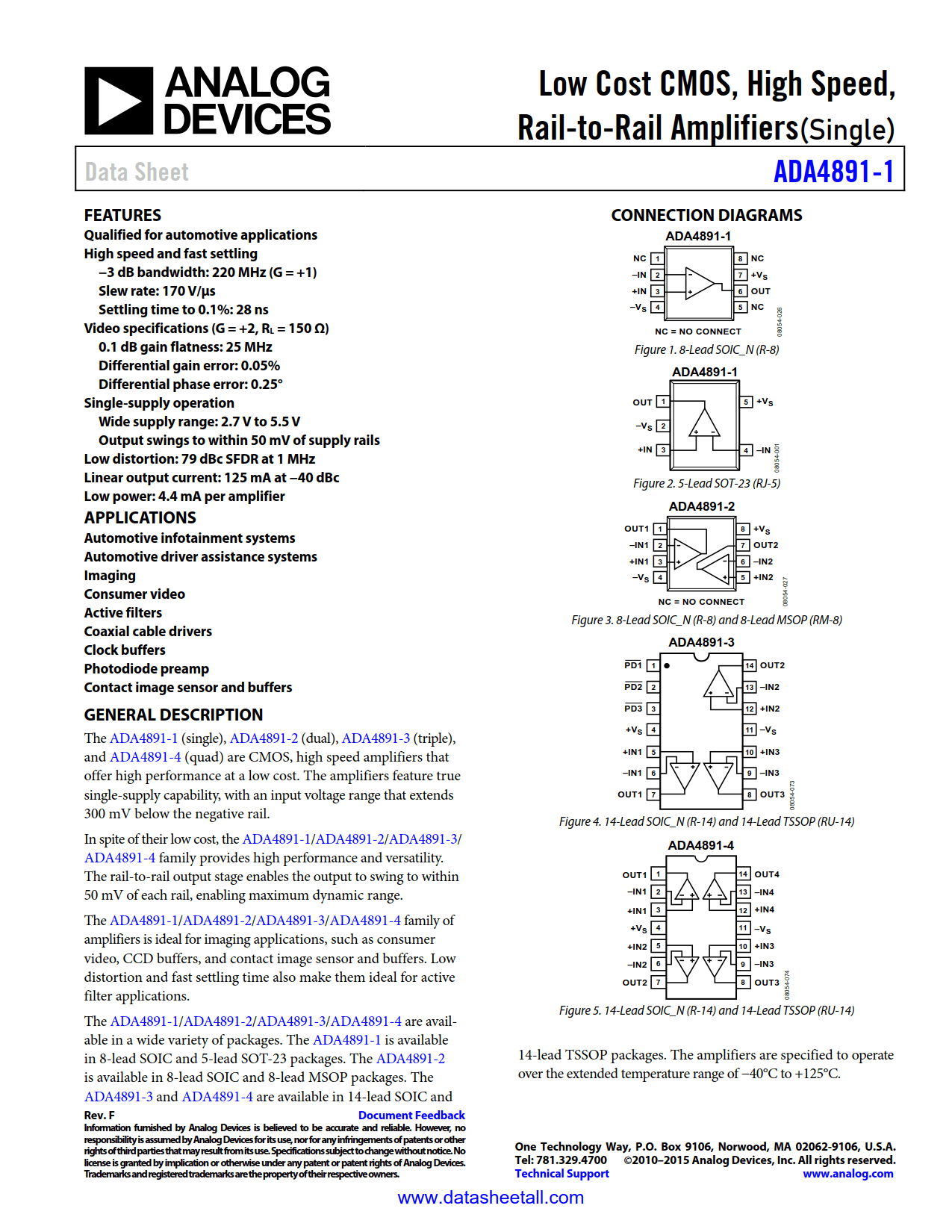
ADA4891-1 Datasheet
Low Cost CMOS, High Speed, Rail-to-Rail Amplifier (Single)

Low Cost CMOS, High Speed, Rail-to-Rail Amplifier (Single)
| Part No. | In Stock | Price | Packaging | SPQ | Marking | MSL | Pins | Temp Range | Package Description |
The ADA4891-1 (single) are CMOS, high speed amplifiers that offer high performance at a low cost. The amplifiers feature true single-supply capability, with an input voltage range that extends 300 mV below the negative rail.
In spite of their low cost, the ADA4891-1 provides high performance and versatility. The rail-to-rail output stage enables the output to swing within 50 mV of each rail, enabling maximum dynamic range.
The ADA4891-1 of amplifiers is ideal for imaging applications, such as consumer video, CCD buffers, and contact image sensor buffers. Low distortion and fast settling time also make them ideal for active filter applications.
The ADA4891-1 are available in a wide variety of packages.
The ADA4891-1 is available in 8-lead SOIC and 5-lead SOT-23 packages.
The amplifiers are specified to operate over the extended temperature range of −40°C to +125°C.